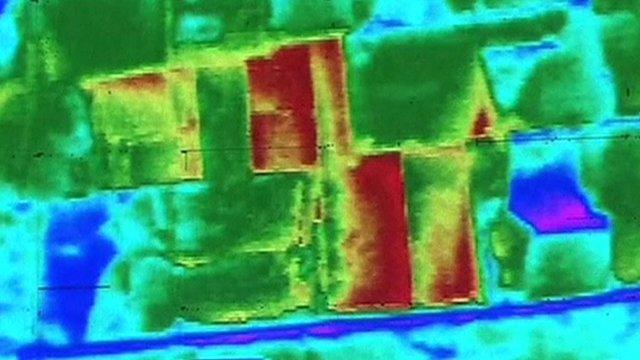How the humble brick built the world
- Published
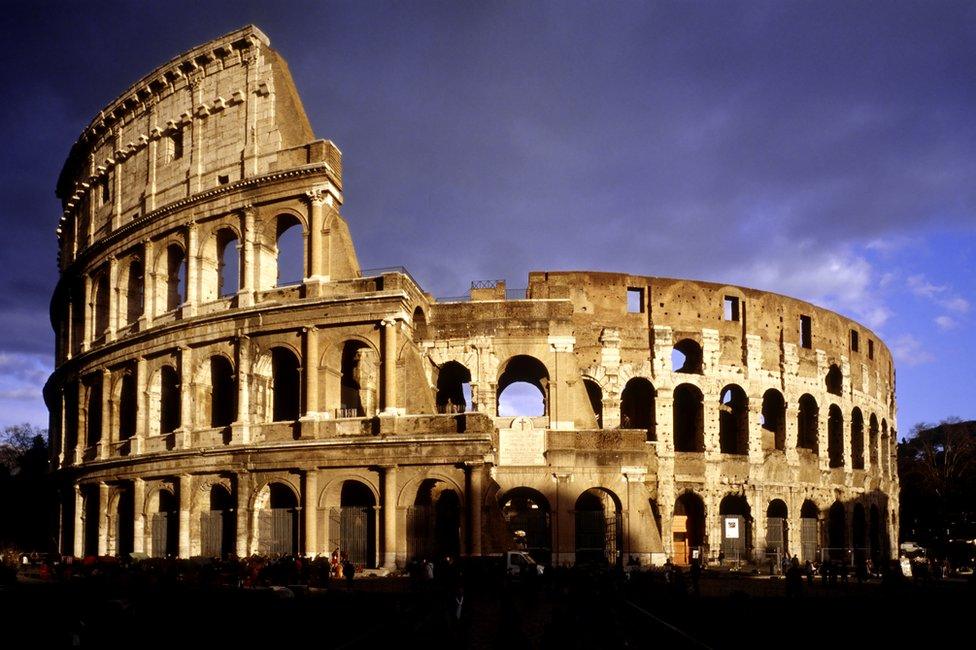
Rome's Colosseum is made of various materials including limestone, concrete and brick
"I found Rome a city of bricks and left it a city of marble," the first Roman Emperor, Caesar Augustus, is said to have boasted 2,000 years ago.
If he did, he was exaggerating. As UCLA's Prof Diane Favro, external and others have argued, although he did build or at least begin a number of new marble buildings, Rome largely remained a city of brick - and is of course no less glorious for it.
But Augustus's disdain sits within a long tradition of denigrating one of the most ancient and versatile of building materials.
The great Roman architectural writer Vitruvius mentions them only in passing. Denis Diderot's great 1751 Encyclopaedia of the Sciences, Arts and Crafts doesn't include any images of brick-making at all.
Perhaps it is because a brick is such an intuitive thing: people have been teaching themselves to build simple structures out of brick for many thousands of years - and grand ones too.

The biggest man-made structure on the planet, the Great Wall of China, is largely constructed of brick. The Hanging Gardens of Babylon were made of brick, as were:
the astonishing temples of Bagan, in Myanmar, also known as Burma
the Taj Mahal, in India
the mighty Malbork Castle, in Poland
the Palazzo in Siena
the Duomo in Florence
the bridges of Isfahan, in Iran
Hampton Court Palace, in London
Hagia Sophia, in Istanbul
the Chrysler Building, in New York
The architect Frank Lloyd Wright said he could make a humble brick worth its weight in gold.

Find out more

50 Things That Made the Modern Economy highlights the inventions, ideas and innovations that helped create the economic world.
It is broadcast on the BBC World Service. You can find more information about the programme's sources and listen to all the episodes online or subscribe to the programme podcast.

In fact, bricks seem to have been with us since the very dawn of civilisation.
The oldest were found in Jericho, in Jordan, by the archaeologist Kathleen Kenyon in 1952.
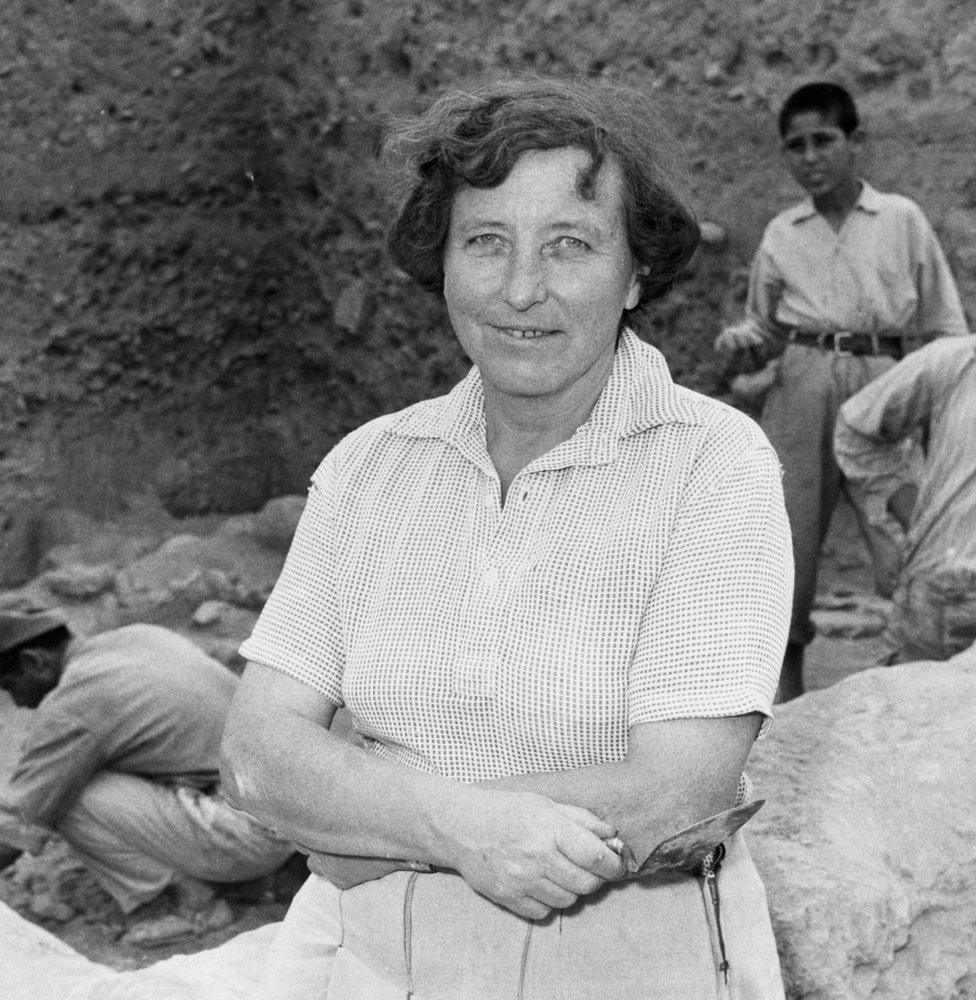
Kathleen Kenyon is considered to be one of the 20th Century's most influential archaeologists
They are somewhere between 10,300 and 9,600 years old - and are simply loaves of mud, baked dry in the sun, then stacked up and glued together with more mud.
The next big step forward was the simple brick mould, also originating in Mesopotamia, at least 7,000 years old, and depicted with great clarity on a tomb painting in Thebes, Egypt.
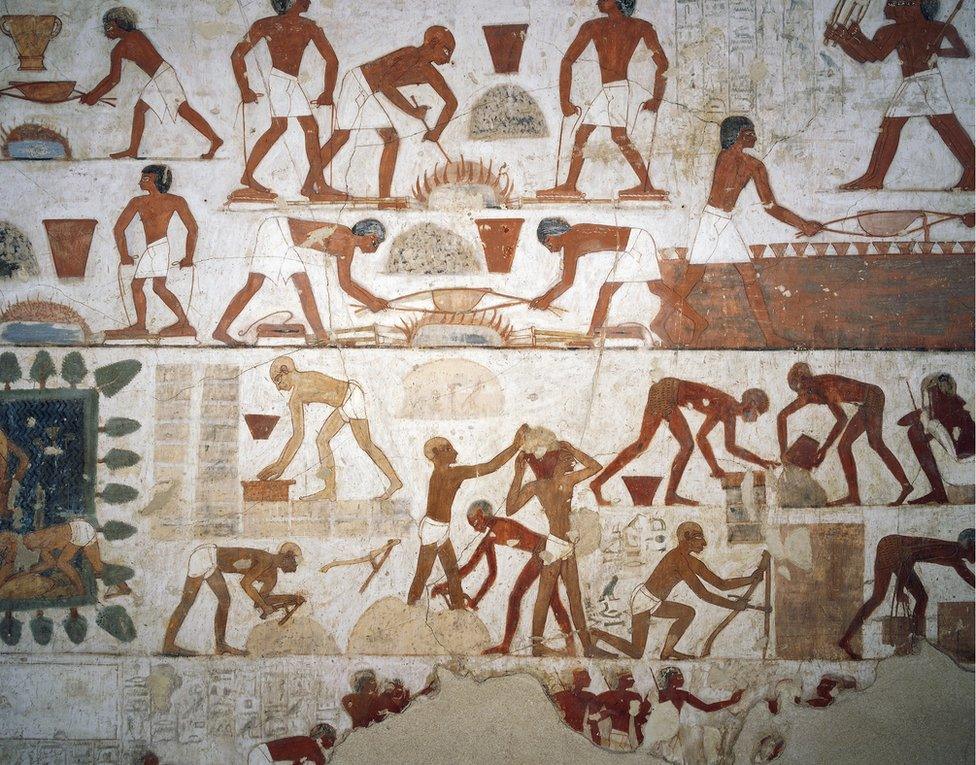
The brick mould is a wooden rectangle, with four sides but no top or bottom, into which clay and straw could be packed to make bricks faster and more precisely.
These moulds can't have been easy to make - they predate the use of metal itself - but once constructed, they made mud bricks much cheaper and better.
Even in a dry climate, sun-dried mud bricks do not usually last. Fired bricks are much more durable - they're stronger, and waterproof.
Making such bricks, by heating clay and sand at a temperature of about 1,000C, has been possible for many thousands of years - but at a price.

More things that made the modern economy:

Accounts from the third dynasty of Ur, dating back about 4,000 years, note that you could buy 14,400 mud bricks for the price of a piece of silver; but only 504 fired clay bricks. That's an exchange rate of nearly 29 mud bricks for a single clay one.
By Babylonian times, 1,500 years later, kiln technologies had improved so much that the price of fired clay bricks had fallen to that of between two and five mud bricks.
And cheap and easy mud bricks are still perhaps the most popular material for building houses across much of the world.
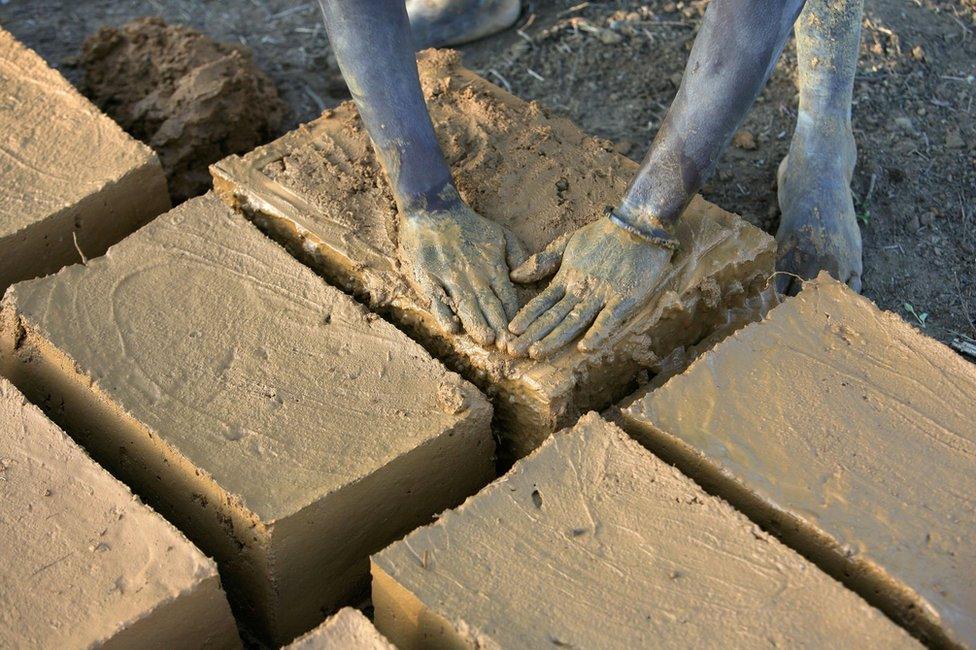
Evariste Citegetse shapes mud bricks for her family's home in Ruyigi, Burundi
But, as the economists Abhijit Banerjee and Esther Duflo observe in Poor Economics, fired bricks can also be an effective way for a very poor household to save. If you have a little money, buy a brick or two. Slowly, slowly, slowly, you'll have a better house.
Chinese staff paid in bricks to top up unpaid wages
The brick is one of those old technologies, like the wheel or paper, that seem to be basically unimproveable.
"The shapes and sizes of bricks do not differ greatly wherever they are made," according to Dobson's Rudimentary Treatise on the Manufacture of Bricks and Tiles, external, first published in 1850.
There's a simple reason for the size: it has to fit in a human hand. As for the shape, building is much more straightforward if the width is half the length.
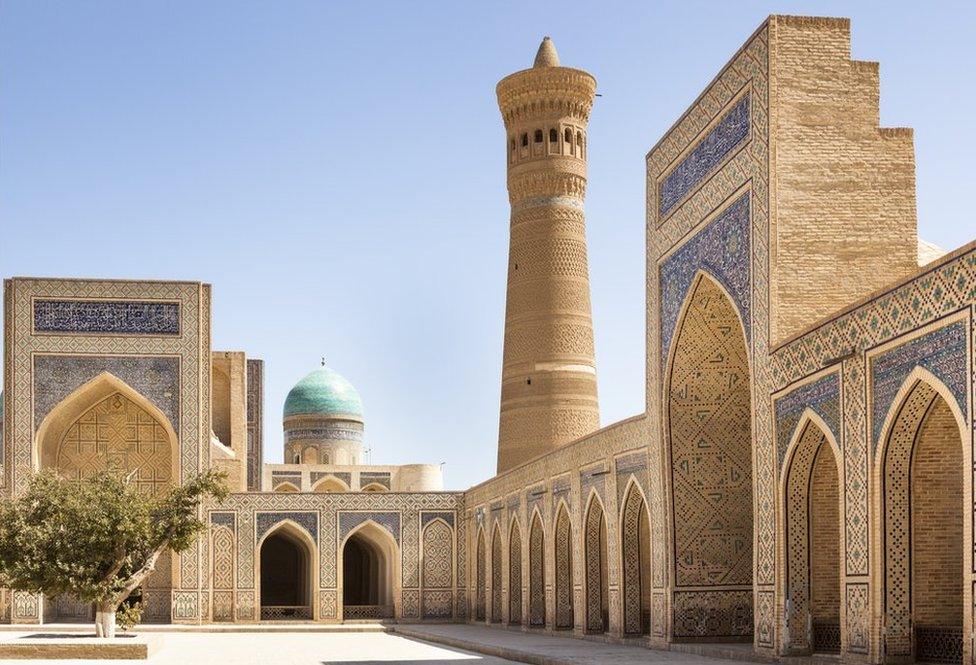
The Kalan Mosque's famed minaret contains a brick spiral staircase
That's why, if you get your nose up close to some buildings that seem vibrantly distinctive to their culture - the minaret of Kalan Mosque, in Uzbekistan, Herstmonceux Castle, in East Sussex, and the Twin Pagodas of Suzhou, in China - you'll find the bricks are all much the same.
It's precisely the uniformity of the brick that makes it so versatile - a lesson freshly rediscovered by every generation of parents when their children start playing with Lego.
Lego, by the way, points out that its plastic bricks don't need to be sent for recycling because they can be reused almost indefinitely. And what is true for toy bricks is also true for the real thing.
Many medieval buildings, such as St Albans Cathedral, in Hertfordshire, simply reused Roman bricks.

St Albans Cathedral was built from bricks salvaged from the ruined Roman town of Verulamium
"Bricks manage time beautifully," writes Stewart Brand in his book How Buildings Learn. "They can last nearly forever. Their rough surface takes a handsome patina that keeps improving for centuries."
How bricks from Bristol were used to build part of New York
My own house, a brick building from the mid-19th Century, now has a large glass door in the back. To make the hole for the glass, we took away some bricks. Then, we mixed them with similar reclaimed bricks, and used the brick salad to extend the house elsewhere.
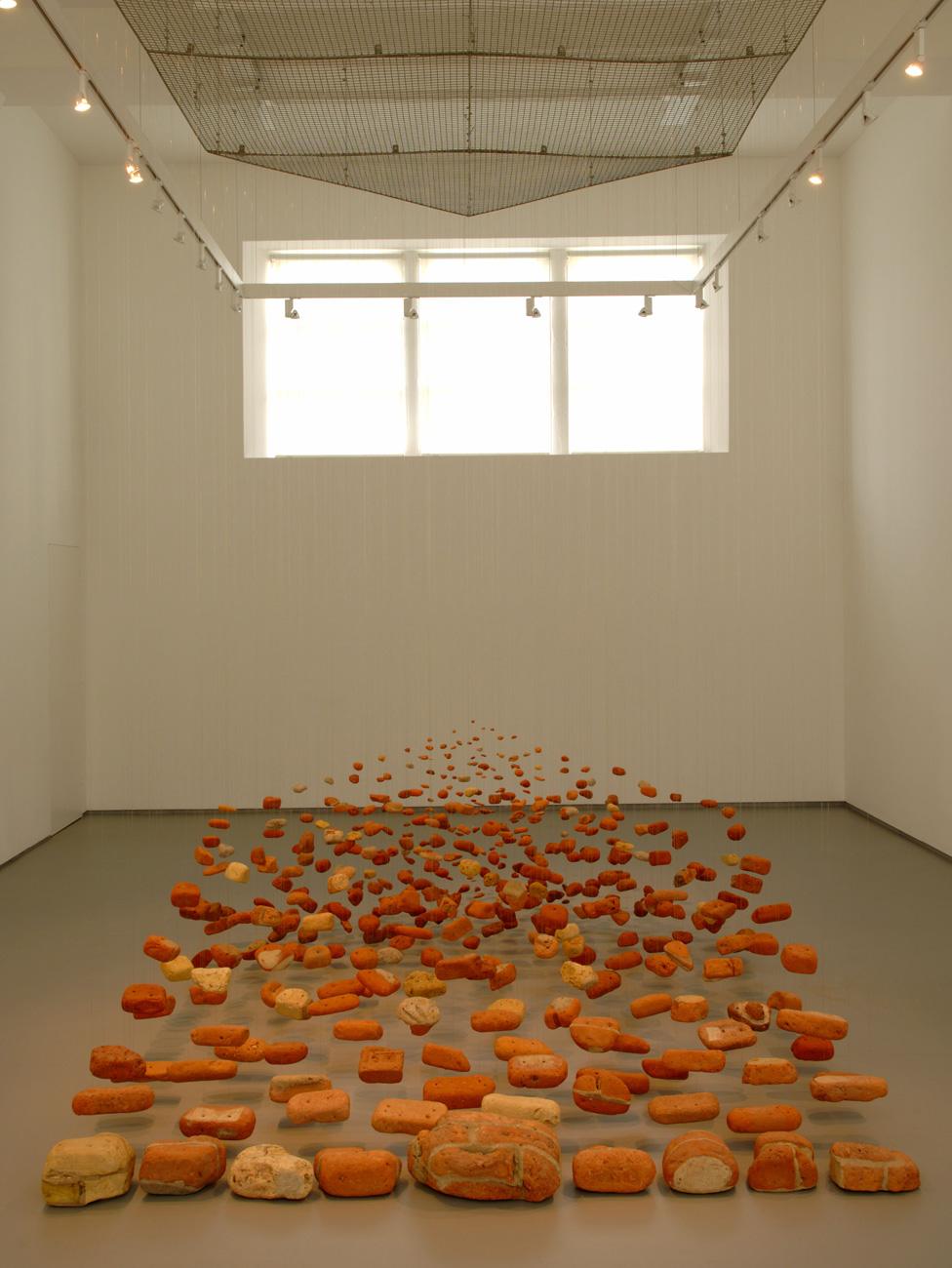
Artist Cornelia Parker's installation Neither Here nor There celebrates bricks from houses that fell off the White Cliffs of Dover

Brick production is still fired using traditional methods in many parts of the world - for example in India, handmade bricks are often fired using a Bull's trench kiln - a long trench lined with bricks that can burn almost any fuel and produce 30,000 bricks a day.
It may be fuel-hungry and polluting, but it uses local labour and materials.
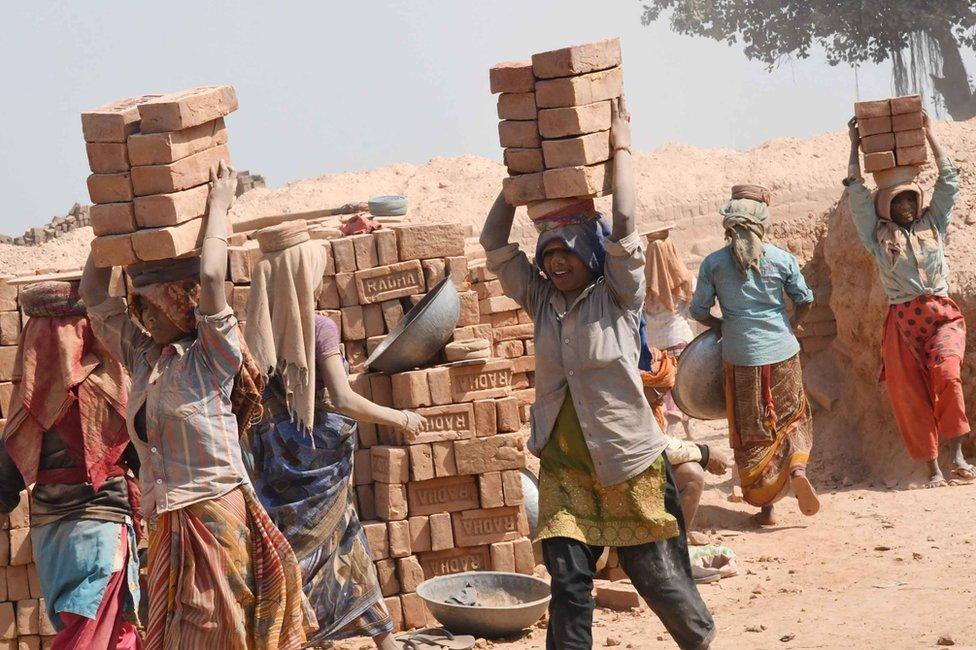
Automation, however, is gradually nosing its way into most parts of brick production.
Hydraulic shovels dig the clay, slow conveyor belts carry bricks through long tunnel kilns, and fork-lift trucks shift precision-stacked pallets of bricks. All this makes the brick itself cheaper.
Building sites have tended to resist automation: the weather and the unique demands of each site require well trained workers.
The bricklayer has long been celebrated as a symbol of the honest dignity of skilled manual labour, and bricklaying tools have barely changed since the 17th Century.

Sam uses a conveyor belt, robotic arm and concrete pump to manoeuvre and place bricks
But, as in so many other professions, there are signs that the robots may be coming to bricklaying. A human bricklayer can lay 300-600 bricks a day. The designers of Sam, the Semi-Automated Mason, claim it can lay 3,000.
What of the brick itself? Various designs of interlocking brick, much like Lego, are catching on across the developing world. The end result tends to be less strong and waterproof than traditional bricks and mortar, but they're quicker and cheaper to lay.
And if you have robot bricklayers, why not give them bigger hands so you can make bigger bricks? Hadrian X is a robot arm that lays gigantic bricks no human bricklayer could wield.
Maybe we shouldn't get too excited, though. Sam's 1967 predecessor, the "Motor Mason", inspired similar claims. Perhaps the bricklayer will last a little longer yet.
The brick certainly will.
The author writes the Financial Times's Undercover Economist column. 50 Things That Made the Modern Economy is broadcast on the BBC World Service. You can listen to all the episodes online or subscribe to the programme podcast.
Correction 22 May 2019: This story originally included the Clifton Suspension Bridge among a list of structures made of brick - but, although the Leigh Wood abutment, upon which its south tower stands, is made of brick, the towers themselves are made of stone.
- Published10 November 2018

- Published1 November 2018
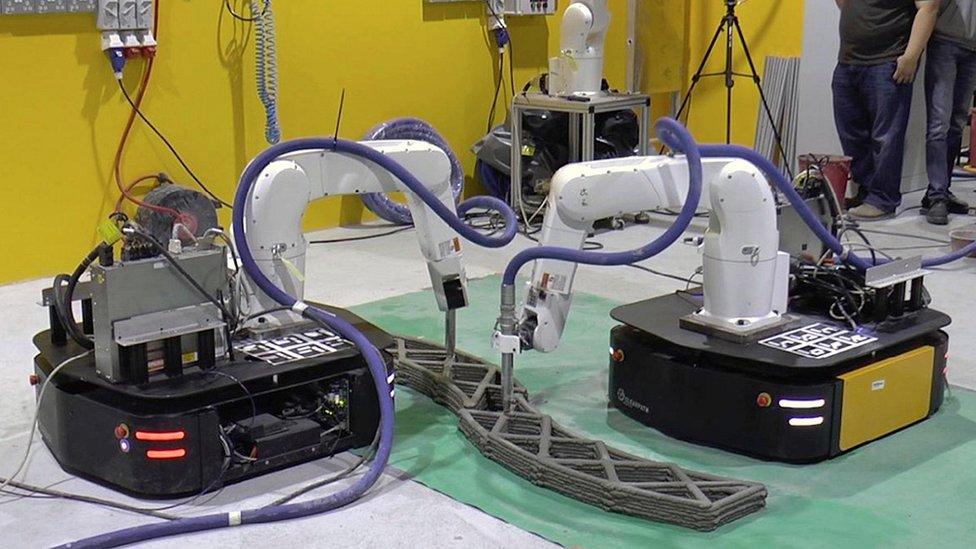
- Published27 January 2018
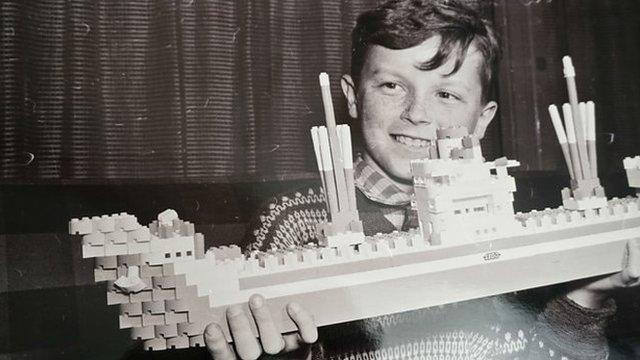
- Published21 October 2017
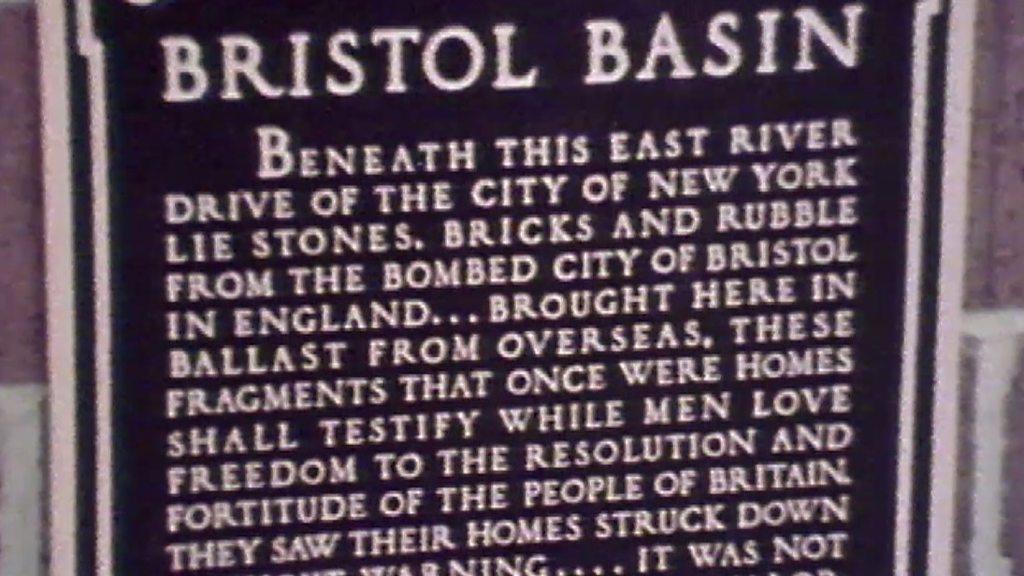
- Published10 November 2015
